Malcolm R. Campbell's Blog, page 215
June 5, 2014
Characters and their themes
As a child, I enjoyed listening to an old recording of Prokofiev’s Peter and the Wolf narrated by Basil Rathbone, with the orchestra conducted by Leopold Stokowski. I liked the music and the story. But something else stayed with me that’s made a big difference to me as a writer.
 Each character is associated with an instrument and a melody or theme. String instruments signify Peter and the cat and the bird are a clarinet and a flute. The French horns tell you when the wolf is present and woodwinds and drums tell you when the hunters are around.
Each character is associated with an instrument and a melody or theme. String instruments signify Peter and the cat and the bird are a clarinet and a flute. The French horns tell you when the wolf is present and woodwinds and drums tell you when the hunters are around.
The idea of a “theme” can help writers create memorable secondary characters without having to provide them with hundreds of words of description and back story.
In my novel The Sun Singer, for example, I wanted to add depth to the character named Tor who, while a blacksmith who made shields and swords, was fascinated by words. When he got them wrong, it provided a little comic relief in between battle scenes. When he was around, there was usually an on-going gag or riff about his vocabulary.
When I look at secondary characters, I think of things that make them stand out, that can be repeated in various ways throughout the story, and that set them apart from other characters in terms of attitudes, speech patterns and appearance.
While it’s probably a good idea to jot down what each character does and what they look like, past a point, I find that a theme helps me remember them myself and then define them for the readers. If you look at political cartoons, you’ll see that the artists have picked several real physical features from the famous people they’re portraying, and then these become the important part of the drawing each time the person appears in a cartoon.
When you see a cartoon with a President or a movie star or a member of Congress, you know who it is immediately because that person’s mouth, eyebrows, beard, hairstyle, or some other feature has been captured in the drawing.
Like the flute and the bird in Peter and the Wolf, the features in political cartoons and secondary characters’ speech patterns/habits/jokes/gestures become one and the same. This is what the writer wants. S/he wants the readers to believe the characters are all three-dimensional even though you can’t spend a lot of time with each minor character’s background in most novels.
In my current work in progress, I have a secondary character who is taken with Mamie Eisenhower, the First Lady at the time this story was set. In the 1950s, a lot of people copied Mamie Eisenhower’s hair style, approach to fashion, the soap she used and the perfume she wore. Now, in 2014, I don’t expect my readers to remember this. But I can still pick out several features pertaining to the First Lady at the time and show how this minor character (who is really full of herself) is using them as part of her personality in a way that others don’t find very flattering.
Like Mamie, she loves charm bracelets. Once the theme is “set in motion,” all I have to do is say that her bracelet rattled on a table, got caught in somebody’s hair, or spun circles of sunlight around a room to remind the reader of the whole Mamie Eisenhower affectation.
Some characters use profanity, some mispronounce words, some smell like they’ve never had a bath, some walk with a limp or talk with their hands or smile too often or fail to make eye contact. You can exploit such things as themes.
When all is said and done, these themes help make the minor characters memorable and familiar to readers as the story unfolds. It’s a trick, in a way, because the readers will think they really know your characters when, in fact, they just know that one is a flute and another is a French horn.
 Malcolm R. Campbell is the author of contemporary fantasies including “The Seeker,” “The Sun Singer” and “Sarabande.”
Malcolm R. Campbell is the author of contemporary fantasies including “The Seeker,” “The Sun Singer” and “Sarabande.”


June 1, 2014
Briefly Noted: ‘Fire Lookouts of Glacier National Park’
Fire Lookouts of Glacier National Park (Images of America), by David R. Butler, Arcadia Publishing (June 9, 2014), 128pp, photographs.
I’m happy to see the release of David R. Butler’s new book about Glacier National Park’s fire lookouts. Several years ago, in Heavens Peak Fire Lookout Assessment Open For Comments, I mentioned the developing plans to refurbish the historic fire lookout on Heaven’s Peak. David told me that most of that work was completed in 2012 and that his book includes before and after pictures. This is good news.
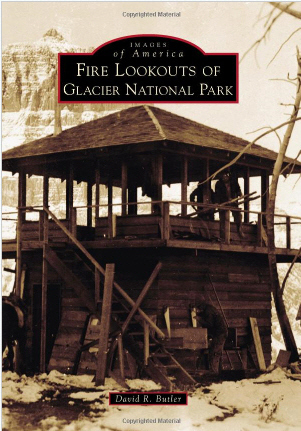 From the Publisher:
The first fire lookouts in the Glacier National Park region were simply high points atop mountain peaks with unimpeded views of the surrounding terrain. Widespread fires in the 1910s and 1920s led to the construction of more permanent lookouts, first as wooden pole structures and subsequently as a variety of one- and two-story cabin designs. Cooperating lookouts in Glacier Park, the Flathead National Forest, and the Blackfeet Indian Reservation provided coverage of forests throughout Glacier National Park. Beginning in the 1950s, many of the lookouts were decommissioned and eventually destroyed. This volume tells the story of the rise and fall of the extensive fire lookout network that protected Glacier National Park during times of high fire danger, including lookouts still operating today.
From the Publisher:
The first fire lookouts in the Glacier National Park region were simply high points atop mountain peaks with unimpeded views of the surrounding terrain. Widespread fires in the 1910s and 1920s led to the construction of more permanent lookouts, first as wooden pole structures and subsequently as a variety of one- and two-story cabin designs. Cooperating lookouts in Glacier Park, the Flathead National Forest, and the Blackfeet Indian Reservation provided coverage of forests throughout Glacier National Park. Beginning in the 1950s, many of the lookouts were decommissioned and eventually destroyed. This volume tells the story of the rise and fall of the extensive fire lookout network that protected Glacier National Park during times of high fire danger, including lookouts still operating today.
From the Book: “Fire lookouts are described by many writers as magical places, and are well-known as inspirational sites for writers and poets such as Jack Kerouac, Normal Maclean, and Gary Snyder, as well as environmental writers and naturalists such as Edward Abbey and Doug Peacock. They also serve as nostalgic, historical reminders of a simpler time before the Internet, wireless communication, and the widespread use of advanced technology for spotting and monitoring fire boundaries.”
A small percentage of hikers and climbers see the nine remaining lookouts (a few of which are still in use) in Glacier, sticking to the more well-known trails, saddle trips and launch trips. For those who have never seen the lookouts, the photographs in this book open new worlds. For those who know, or who would like to more, Butler brings us another chapter in Glacier’s colorful history.
 Malcolm R. Campbell is the author of three contemporary fantasy novels (“The Seeker,” “The Sun Singer,” “Sarabande” set in Glacier National Park as well as his non-fiction “Bears; Where They Fought,” a historical look at Glacier’s Swiftcurrent Valley.
Malcolm R. Campbell is the author of three contemporary fantasy novels (“The Seeker,” “The Sun Singer,” “Sarabande” set in Glacier National Park as well as his non-fiction “Bears; Where They Fought,” a historical look at Glacier’s Swiftcurrent Valley.


May 31, 2014
Hoagy Carmichael I’m Not
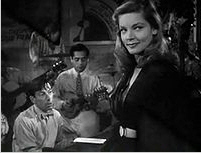
Hoagy Carmichael at piano, with Lauren Bacall in To Have and Have Not – Wikipedia photo
I don’t think my parents shoved me into many years of piano lessons when I was growing so that I’d end up writing songs like “Georgia on My Mind” and “Stardust.”
Their primary hope was that, by learning how to play the piano, I’d be the Hoagy Carmichael they saw in movies like “To Have and Have Not” and “The Las Vegas Story.”
The piano guy was always popular. He’d go into a club or a home where a piano sat idle, sit down, begin to play, and suddenly he was surrounded by people who wanted to listen, sing or dance. Popular, sure, I protested, but he never got the girl.
Bogart always had more going for him than Hoagy.
I Preferred Jazz, Ragtime and Boogie Woogie
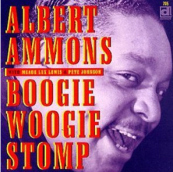 I didn’t want to play exactly like Hoagy Carmichael. I wanted to play more like Scott Joplin (“Maple Leaf Rag”) and Albert Ammons (“Boogie Woogie Stomp”). But my piano teacher, bless her heart, kept giving me classical stuff. I liked it, but I didn’t want to play it. I pointed out to my parents that Hoagy Carmichael never walked into a club and played the Chopin Polonaise Op. 53 in A flat major. (That piece was always beyond my “skills,” as it turned out.)
I didn’t want to play exactly like Hoagy Carmichael. I wanted to play more like Scott Joplin (“Maple Leaf Rag”) and Albert Ammons (“Boogie Woogie Stomp”). But my piano teacher, bless her heart, kept giving me classical stuff. I liked it, but I didn’t want to play it. I pointed out to my parents that Hoagy Carmichael never walked into a club and played the Chopin Polonaise Op. 53 in A flat major. (That piece was always beyond my “skills,” as it turned out.)
Even though I was long past piano lessons and no longer living at home when “The Sting” came out in 1973 creating a temporary resurgence in ragtime, I mentioned in a letter to my parents that if they’d allowed me to perfect the “Maple Leaf Rag” when I was growing up, I’d be a popular man about town rather than an unknown writer.
Goodness knows, I tried to perfect ragtime. Trouble was, the family piano was in the living room just in case Hoagy Carmichael dropped by. When I practiced my classical music, my parents heard every note. But when they went outside, I’d morph the stuff into ragtime or boogie woogie. Invariably, a window was open and they’d comment when they came back inside that they’d never heard Bach with an eight-to-the-bar boogie left hand.
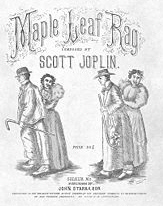
First edition cover of the Maple Leaf Rag – Wikipedia photo
My piano playing, such as it was, deteriorated (if that could be possible) down to pretty much nothing but “Chopsticks.” Sure, I listened to Horowitz playing Chopin and occasionally imagined I could play like that. Horowitz probably practiced more than I did. So did Scott Joplin and Albert Ammons, kings of ragtime and boogie woogie.
The characters in my stories often listen to the music I wanted to play. In “Sweetbay Magnolia” (in Emily’s Stories), Emily’s father is a ragtime fan and listens to Scott Joplin in his truck. This gave me an excuse to listen to Joplin as I timed the songs on an album to see how many of them one would hear on a typical trip between Tallahassee and St. Marks, Florida.
Now, I’m working on another Florida-based story, this one set in the 1950s. There’s a juke joint in the story and the customers there want to dance. In those days–and in my story–nothing made people want to dance more than the raw energy of a piano player with–as Peter Silvester called it in the title of his book–a left hand like God. Not that I need an excuse, but now I have a good reason for listening to Pine Top Smith, Albert Ammons and today’s Jools Holland.
Writers often tell their friends to “be good” or they’ll end up in a story. Good advice, I suppose. But there are times when I’m more interested in the skills my friends have that I never could perfect. If you can play Chopin or Bach, I might put you in a story. But seriously, if you sit down at the piano of my childhood which sits seldom-used in my living room now and play “The Entertainer” or “Boogie Woogie Blues,” your music will catch my attention faster than your real or imagined wicked deeds.
Then, as we used to say, we’ll be cooking with gas.

Available on Kindle and as an audio book
“I’ve recommended this audiobook more than any other I’ve listened to.” from M. Stein’s review


May 26, 2014
How to create a whoopass wall of protection
Did you ever notice how tough guys in movies and brainy guys on science shows are always claiming that a darned good bomb can be made out of the contents of a family’s medicine cabinet?
The first time I heard this I was a kid in the days when kids were still allowed to play with fire, cap pistols, bows and arrows and cherry bombs. How exactly would I make a darned good bomb? Would I mix Preparation H and Vagisil? Or, possibly hydrogen peroxide and codeine. (In those days, the feds allowed people to buy codeine, paregoric and other miracle meds).
The thing is, nobody who claimed to know how to turn a medicine cabinet into a bomb ever explained how.
I have no interest in making a bomb, but I wonder what–as a writer–I should do if a character in one of my books was fighting bad guys, needed a bomb, and ran into the bathroom to throw one together. How should one realistically describe what he does?
Look, I’ve read plenty of thrillers written by people who know everything in the world about bombs, guns, aircraft, submarines, martial arts, police procedures, &c. They never say, “Bob grabbed a gun before he got on the helicopter.” For purposes of reality–and to prove to readers they know their subject matter–they state what kind of gun in was, what kind of helicopter it was, and spout out a bunch of stats like they’ve got the owner’s manuals with them.
What about magic?
Rowling has already confessed to using fake spells in the Harry Potter books. They’re kind of cute, actually. But they don’t do squat. I’m sure a lot of people went around shouting Accio Money and Avada Kedavra before Jo told the world she didn’t give us the real stuff.
So now, I’ve got an ethical dilemma as I work on my conjure woman novella. I’m a fanatic about realism because I think it’s a wonderful foundation for the magic. If the stuff people already know is obviously real, then they’ll think the stuff they don’t know is also real. (That’s not logical, but it works in books.)
Suffice it to say, that if Rowling used real spells or if some book called “Mega-Enforcer Dude” gave a step-by-step recipe for making a bomb out out Preparation H, folks would be getting hurt. But, the details have to sound plausible because: (a) you don’t want people who know how to make spells and bombs writing bad reviews on Amazon saying the recipes were a bunch of crap, and (b) you hate being dishonest with your readers.
There’s a wonderful conjuring spell called The Whoopass Wall of Protection (not its real name). As she fights the bad guys, my conjure woman needs to use this spell. But I can hardly say she dumped “a bunch of stuff” out of a sack. Nobody will believe she knows squat or, worse yet, that I (as the author) know squat. I can use footnotes to tell readers that the real Whoopass spell isn’t included, but footnotes turn people off because they start thinking they’re reading a doctoral dissertation and, trust me on this, nothing is more boring that that kind of writing.
Perhaps I should give a few hints to satisfy those craving reality as well as those who really know the spell. “Lucy dumped a sack filled with cornmeal, coffin nails, rue and pepper on her sidewalk.” Okay, that could work, but it doesn’t really plunge the reader into the moment, does it?
This is going to require some careful thought. If you’re a writer, perhaps you can offer some advice about just how much dangerous information should be included in a novel for the sake of accuracy.
If you’re a reader, just how much do you want to know? And, if the novella included the real spell, would you promise not to use in unwisely?
Malcolm R. Campbell, as you may already suspect, writes magical realism, fantasy and paranormal stories and novels.


May 21, 2014
Erosion of the American Wilderness Idea
From the Crown of the Continent Research Learning Center:
“Brownbag” Lecture
Thursday, May 22, 2014
12 noon-1 PM
Glacier National Park Community Building
 Author and wilderness lover, Howie Wolke will talk about the ongoing loss of wilderness, both in the big outdoors and within the human animal. He will relate the erosion of the wilderness idea to the spreading disease of Wilderness Amnesia.
Author and wilderness lover, Howie Wolke will talk about the ongoing loss of wilderness, both in the big outdoors and within the human animal. He will relate the erosion of the wilderness idea to the spreading disease of Wilderness Amnesia.
Wolke is a ‘wild preservative,’ to borrow the term from the late Edward Abbey, advocating for the designation and protection of real wilderness in the United States. He is past president and current vice president of the national conservation group Wilderness Watch. He also cofounded Big Wild Advocates, Montanans for Gallatin Wilderness, the original Wyoming Wilderness Association and the original wilderness-focused Earth First. Following his passion, Wolke has made his living as a wilderness guide and outfitter for the last 36 years.
-
Click on the link above for upcoming brownbags.
Three of Malcolm R. Campbell’s contemporary fantasy novels are set in Glacier National Park.


May 18, 2014
Briefly Noted: Charles M. Russell: Photographing the Legend
“Charles Marion Russell (1864–1926) was many things: consummate Westerner, historian, advocate of the Northern Plains Indians, cowboy, writer, outdoorsman, philosopher, environmentalist, conservationist, and not least, artist.” – Charles M. Russell Museum
Charles M. Russell: Photographing the Legend, by Larry Len Peterson, University of Oklahoma Press (March 20, 2014), 329 pages, photographs
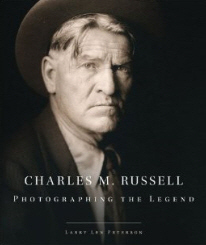 From the Publisher: Almost as familiar as the images of the American West he painted and sculpted is the figure of Charles M. Russell himself. Standing or mounted, in boots and wide-brimmed hat, sash knotted at his waist, gaze steady under a hank of unruly hair: he is the one and only “Cowboy Artist.” What is not so well known is the story that unfolds in the myriad photographs of Russell, pictures that document a remarkable life while also reflecting the evolution of photography and the depiction of the American West at the turn of the twentieth century. This biography makes use of hundreds of images of Russell, many never before published, to explore the role of photography in shaping the artist’s public image and the making and selling of his art. More than that, the book shows how the Cowboy Artist personified what he portrayed.
From the Publisher: Almost as familiar as the images of the American West he painted and sculpted is the figure of Charles M. Russell himself. Standing or mounted, in boots and wide-brimmed hat, sash knotted at his waist, gaze steady under a hank of unruly hair: he is the one and only “Cowboy Artist.” What is not so well known is the story that unfolds in the myriad photographs of Russell, pictures that document a remarkable life while also reflecting the evolution of photography and the depiction of the American West at the turn of the twentieth century. This biography makes use of hundreds of images of Russell, many never before published, to explore the role of photography in shaping the artist’s public image and the making and selling of his art. More than that, the book shows how the Cowboy Artist personified what he portrayed.
About the Author: “A two-time Western Heritage Award winner for best art book of the year and recipient of the Scriver Award, Larry Len Peterson is an acknowledged expert on art and art history of the American West. His publications include Charles M. Russell, Legacy (1999); A Most Desperate Situation (2000, 2001); Philip R. Goodwin: America.” – Mountain Press Publishing
If you’re a fan of Charles M. Russell, you’ll find a large selection of his works in the Montana Historical Society Museum in Helena, Montana. According to the society, “This collection (numbering over 200 pieces—24 major oils, 33 major watercolors, 40 pen and inks, 15 original models, 60 bronzes, and 34 illustrated letters) is one of the most significant collections of Russell art anywhere. ” Click here for information about the collection and the society.
Malcolm R. Campbell is the author of contemporary fantasy novels, including three set in Montana: “The Seeker,” “The Sun Singer,” and “Sarabande.”


May 15, 2014
TBT: A note from Jackie Kennedy
“She wrote of being in love, falling out of love, fearing a marriage to a skirt-chaser and then loving that marriage, and believing in God to hold on to the hope of reuniting with her assassinated husband.” – CNN in Letters reveal private thoughts of young Jackie Kennedy
 With my love of history, I’m sure that many of the biographies I’ve read have been based partially on letters that were once private and that were never intended to become public.
With my love of history, I’m sure that many of the biographies I’ve read have been based partially on letters that were once private and that were never intended to become public.
However, as I read the news story Jacqueline Kennedy’s letters to Irish priest to be auctioned off next month, my natural inclination to err on the side of privacy trumped any opposing ideas that a lover of history in the future will benefit from the sale and publication of this material. But then, nobody asked me to be the world’s conscience.
Which brings me to the already-public response of Jacqueline Kennedy to those of us who sent her our condolences when the President was assassinated in Dallas. I seldom write public figures. But there was something different about the moments after Dallas that led me to write. Her face–shown so often in those days–was the face of a new generation’s loss of innocence.
Even though I knew she would never see my letter, I nonetheless wanted to add my voice to the chorus offering her our support. Her office sent a response and I was grateful for it even though it was formal and official.
My wife found her response and the mailing envelope and scanned them in in the midst of our huge down-size-all-the-files project. Seeing the note that surprised me as a young college student when it came in the mail reminded me this week just how stunned the nation was in 1963.


May 10, 2014
Review: ‘Speaking in Forked Tongues’ by Brad Gallaway
Speaking in Forked Tongues, by Brad Gallaway, Signal 8 Press (April 22, 2014), 306 pages
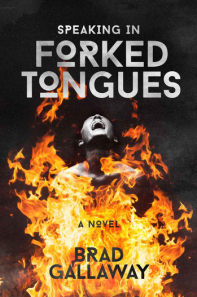 Brad Gallaway’s dark fantasy/horror novel Speaking in Forked Tongues is inventive, delightfully written tale about a young man who calls demons for a living. When folks can’t solve their earthly problems, they contact Helping Hands agency who sends out a caller with an underworld solution. Callers who have been to hell and back multiple times are the best in the business.
Brad Gallaway’s dark fantasy/horror novel Speaking in Forked Tongues is inventive, delightfully written tale about a young man who calls demons for a living. When folks can’t solve their earthly problems, they contact Helping Hands agency who sends out a caller with an underworld solution. Callers who have been to hell and back multiple times are the best in the business.
While the publisher’s description claims that protagonist “Bren Barran is a normal guy in most ways,” one might ask whether a young man who was adopted by demons, who grew up in hell, and who brings clients and demons together to fix what nobody else can fix can possibly be normal in most ways. Yet, Gallaway makes Barran seem normal, in spite of a predilection for dark, self-deprecating humor.
Unlike poor Faust who sold all of his soul for help from hell, Barran’s clients usually part with a mere sliver, insuring that the demon on call gets what he wants, Barran’s boss Nareth gets what she wants (a cut of the action), the callers get paid and that the happy clients have enough soul left to bring in repeat business.
What could possibly go wrong?
Even though hell is a well-run, ably governed and a relatively safe place quite unlike what we’ve all heard, there’s room there for jealousy and discord. Truth be told, Barran doesn’t think demonkind is any worse than humankind when it comes to bad traits except for the fact demons are physically larger, have claws, and know dangerous (and harmful) spells. So, when Helping Hand’s callers start disappearing and when Barran starts getting attacked on the street, it isn’t long before (seemingly) all hell breaks lose.
There’s a bit of expected gore in this book and a wonderfully tangled plot for Barran to navigate as he tries to solve his agency’s demon problem while staying alive. Naturally, Mom and Dad want to help, but according to the rules, they also have to be paid. The bad guys in this story are really bad and Gallaway makes them seem uncomfortably plausible while leading readers to an ending they won’t see coming.
On a minor note, a warning to parents: The novel’s listing on Amazon claiming that the book is suitable for ages 1 to 17 is either an error or a devilish promotional trick. Teens and adults of all ages can probably stand the heat, while enjoying the trip.
Malcolm R. Campbell is the author of paranormal short stories and contemporary fantasy novels.


May 6, 2014
Keeping up with what’s known or was known
“I set the date for the Singularity—representing a profound and disruptive transformation in human capability—as 2045. The nonbiological intelligence created in that year will be one billion times more powerful than all human intelligence today.” – Ray Kurzweil
“The future always comes too fast and in the wrong order.” Alvin Toffler, in “Future Shock”
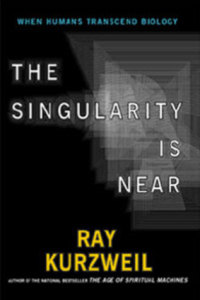 Kurzweil (“The Age of Spiritual Machines”) says in his book “The Singularity is Near” that humans will will soon transcend the “limitations” (as he sees them) of our biology. One can imagine, perhaps, a star child like we saw in 2001: A Space Odyssey or, in a more mechanical sense, bionic men and women who surpass the skills of Lee Majors in The Six Million Dollar Man Lindsay Wagner in The Bionic Woman.
Kurzweil (“The Age of Spiritual Machines”) says in his book “The Singularity is Near” that humans will will soon transcend the “limitations” (as he sees them) of our biology. One can imagine, perhaps, a star child like we saw in 2001: A Space Odyssey or, in a more mechanical sense, bionic men and women who surpass the skills of Lee Majors in The Six Million Dollar Man Lindsay Wagner in The Bionic Woman.
In his book Critical Path, Buckminster Fuller discussed the “Knowledge Doubling Curve” and, as we see, the more we know, the faster we know more. It was said that up to 1900, the total of human knowledge doubled every century and that by World War II it doubled every 25 years. Now, estimates depend on the field one’s talking about, but it appears that on average, our knowledge doubles every thirteen months.
Back in the early days of Star Trek, the crew of the Enterprise occasionally encountered beings who were so “advanced” that they were pure thought, often depicted as pulsating clouds of light. I wonder if this is what we will become.
People from various walks of life often say that today’s youth knows a lot less about science, geography, history, literature and culture than the youth of earlier generations. Some people blame our consumer culture (along with TV and the Internet) for pulling people away from the once-championed liberal arts education into a homogenized world of things–having the latest things that everyone else is having or trying to have.
 Others blame video games as early suspects in pulling people away from anything requiring contemplation into short-attention span, high-energy moments. More and more people seem to have less and less patience for anything that takes time to read, to learn, to understand, or to acquire.
Others blame video games as early suspects in pulling people away from anything requiring contemplation into short-attention span, high-energy moments. More and more people seem to have less and less patience for anything that takes time to read, to learn, to understand, or to acquire.
Or, perhaps we are not keeping up with the expansion of knowledge, so we find comfort in focusing our shattered attention spans of things of the moment. The thing breeds on itself: we not only have no memory of what happened 25 years ago (our brains won’t hold it or don’t care about it), but it becomes–in the eyes of our peers–a serious defect of character to know about such things.
Alvin Toffler wroter Future Shock in 1970. I want to ask: “Are we there yet?” Too much information too fast, he said, leaves people overwhelmed and with feelings of being disconnected. Perhaps this makes it easy to focus on the trivial of the now rather than on the long-term of either yesterday or tomorrow.
I am not a futurist, so I have no philosophy about where mankind is headed, for better or worse. What I see as I write stories set 15-25-50 years in the past, is seemingly a growing list of things people know less and less about. I’m not talking about the more-trivial things such as today’s youth not immediately knowing what a 45 rpm record was or kids asking their parents why the sound on a land-line phone is called a dial tone even though the phone has no dial on it.
As a novelist, I am more interested in the culture, religion, and prevailing points of view as they were during the times when my novels are set. I lived during those times, but I have a bad memory for details–I should have kept a journal, I suppose, but it hardly would have had the space to define everything that was common knowledge at the time.
According to David Russell Schilling, humankind’s total amount of knowledge will soon double every twelve hours. Depending on a person’s focus, they can be happy about many advancements that make life better and/or easier than it was X years ago. Change is a constant in the universe, as the I Ching tells us. If knowledge is a tidal wave, how–I wonder–does any individual keep up? Do we find niche areas and learn everything we can about them? Do we rely on our ability to find information (as needed) rather than on our ability to remember vast stores of facts? Or, do we resign ourselves to becoming like the BORG in Star Trek, a society in which individuals are basically mindless drones doing chores as part of an electronic or telepathically linked collective?
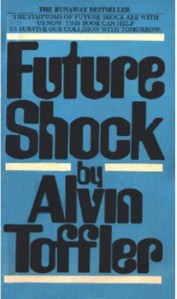 I have no answers for such questions. And, I’m not even sure that becoming pulsating clouds of thought is necessary bad. What I personally miss is the idea that we are, in many ways, like flowers being cut off from their roots and stems. If we are, so to speak, drone-like entities who are only interested in the moment, then we have lost our history, our culture, our rites of passage, our metaphysics and, from this writer’s point of view, almost every thing else that makes us human.
I have no answers for such questions. And, I’m not even sure that becoming pulsating clouds of thought is necessary bad. What I personally miss is the idea that we are, in many ways, like flowers being cut off from their roots and stems. If we are, so to speak, drone-like entities who are only interested in the moment, then we have lost our history, our culture, our rites of passage, our metaphysics and, from this writer’s point of view, almost every thing else that makes us human.
Perhaps all that is passe. Maybe all that binds to ancient concerns like a rope holding an ship to a pier. I don’t think so, but then–as I consider the speed of advancing knowledge and how impossible it appears to keep up–I have to say that I really don’t know enough to know what it’s bad for me to know. For now, though, I think the speed of advancing knowledge has the potential for decreasing the value of the individual and the value each individual places on the welfare of every other individual.
Such ponderings are, perhaps, one of the reasons I write fantasy. My writing allows me to focus on imaginary worlds that I (as the author) know everything about all the time.
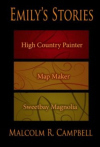
$1.99 on Kindle
My books include “The Seeker,” “The Sailor,” “The Betrayed,” and “Emily’s Stories.”
See the latest great review of “Emily’s Stories”


May 4, 2014
Audio edition of ‘Jock Stewart Strikes Back’ released
Jock Stewart Strikes Back by Malcolm R. Campbell –Now Available Audio, Print and All Ebook Editions!
Jock Stewart Strikes Back
by Malcolm E. Campbell
Since modern-day journalism is going to hell in a hand basket and/or nowhere fast, Jock Stewart strikes back by categorizing news events as satirical, outlandish, strange or political. Nonetheless, according to informed sources, the use of this volume as a journalism textbook has not been authorized anywhere the world is right as rain.
The fictional news stories and “Night Beat” editorial columns in this collection began as posts on the “Morning Satirical News” weblog and subsequently appeared in the Worst of Jock Stewart and/or the “Jock Talks” series of e-books. Jock Talks…Politics was a 2013 Pushcart Prize nominee.
Stewart, who served diligently as the protagonist in Jock Stewart and the Missing Sea of Fire, refutes charges that he was raised by alligators or hyenas. When he was a young boy, his dear old daddy said, “Jock, everyone but you and me is scum and I’m not sure about you.”
That proverb opened Jock’s eyes to the realities of the world, primarily that everything is worse than it seems: the small-town newspaper, the Star-Gazer, is allegedly run by fools and buffoons; the Junction City, Texas, government is allegedly corrupt and inept.
Production Notes
Jock Stewart Strikes Back is narrated and produced by Barry Newman, Florida. Barry’s career in media and journalism, including voice work in radio and TV commercials, lends a unique ‘Jock-ness’ to the production, and we look forward to working with him again in the future.
Where You Can Find It
AUDIOBOOK: http://www.amazon.com/Jock-Stewart-Strikes-Back/dp/B00K34NFPA
PRINT: http://www.amazon.com/Jock-Stewart-Strikes-Malcolm-Campbell/dp/0615989225
KINDLE: http://www.amazon.com/Jock-Stewart-Strikes-Malcolm-Campbell-ebook/dp/B00IUA1S76
ALLROMANCE/OMNILIT: https://www.omnilit.com/product-jockstewartstrikesback-1465654-242.html
APPLE: https://itunes.apple.com/us/book/jock-stewart-strikes-back/id839659754
NOOK: http://www.barnesandnoble.com/w/jock-stewart-strikes-back-malcolm-r-campbell/1118909075
SMASHWORDS ALL EBOOK FORMATS: https://www.smashwords.com/books/view/417765
Jock Stewart Strikes Back Sneak Peek Video






